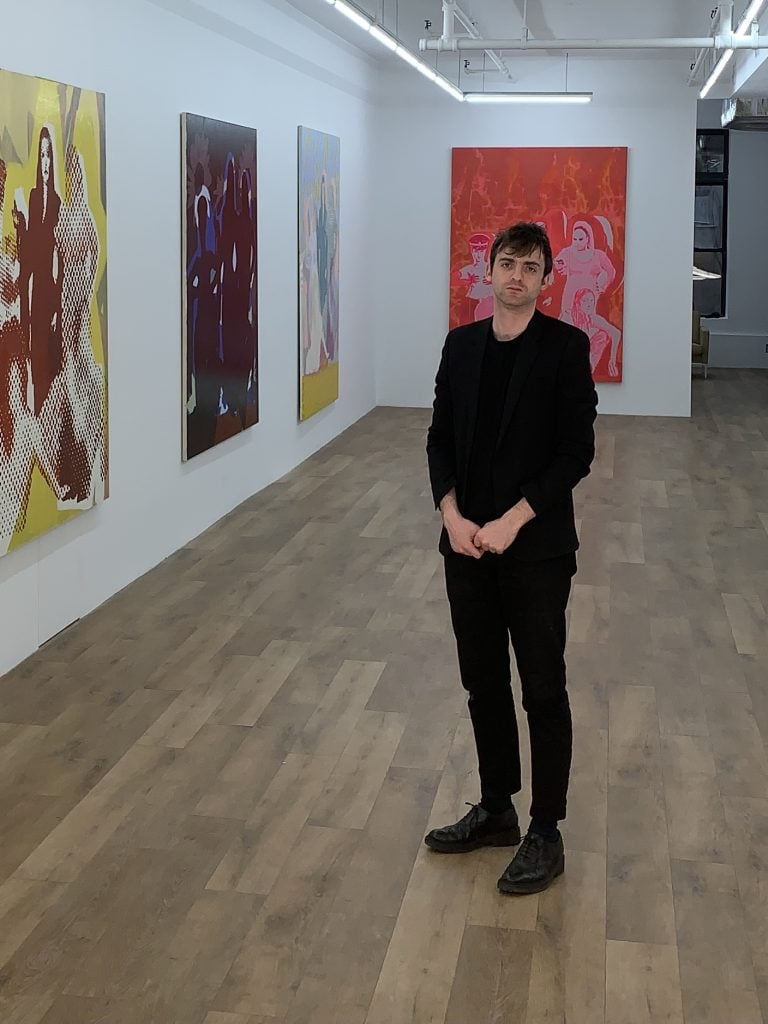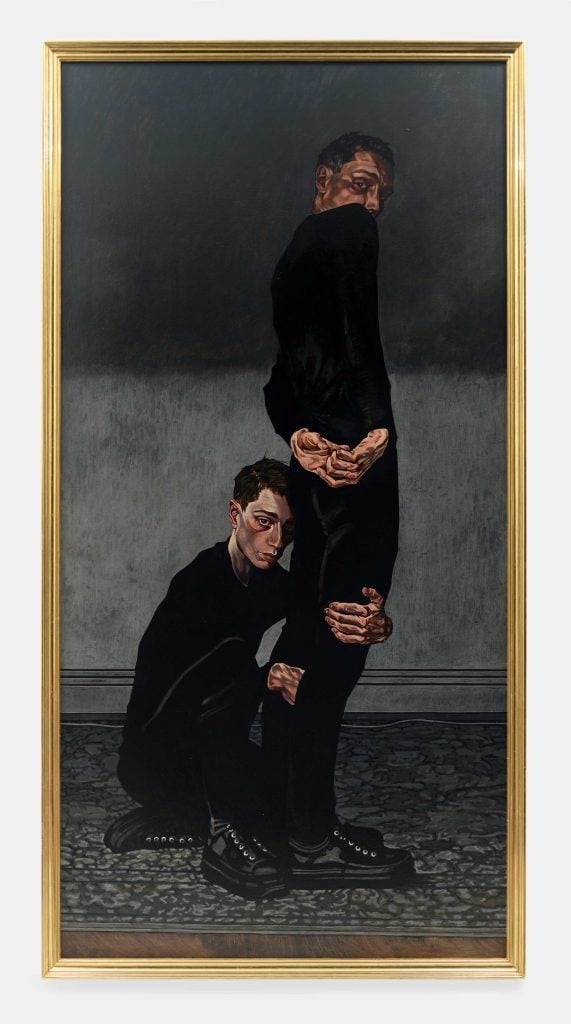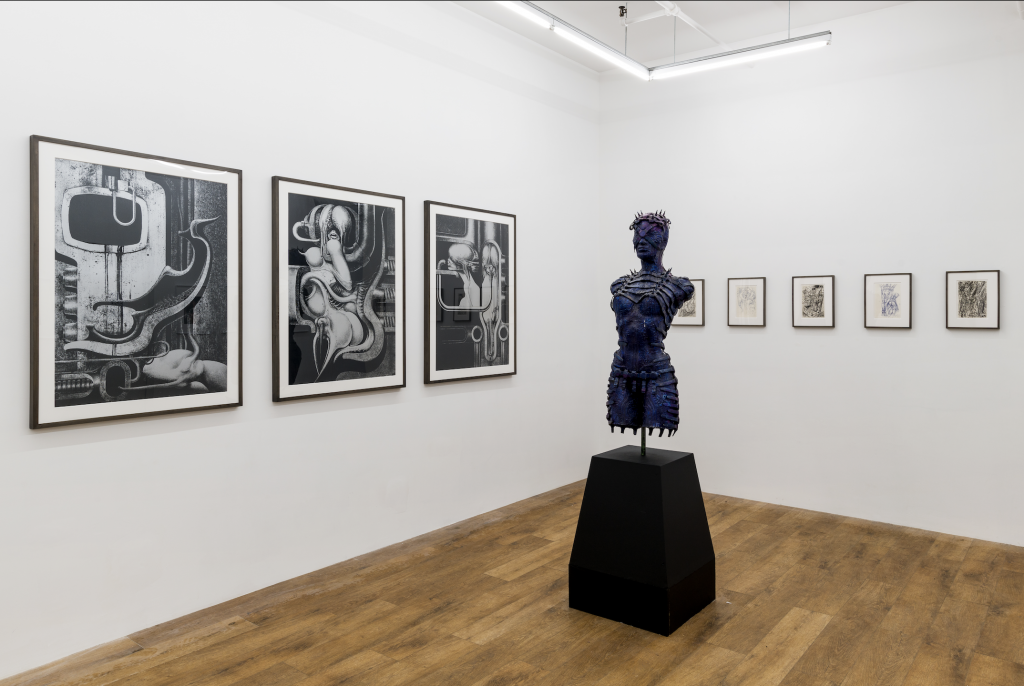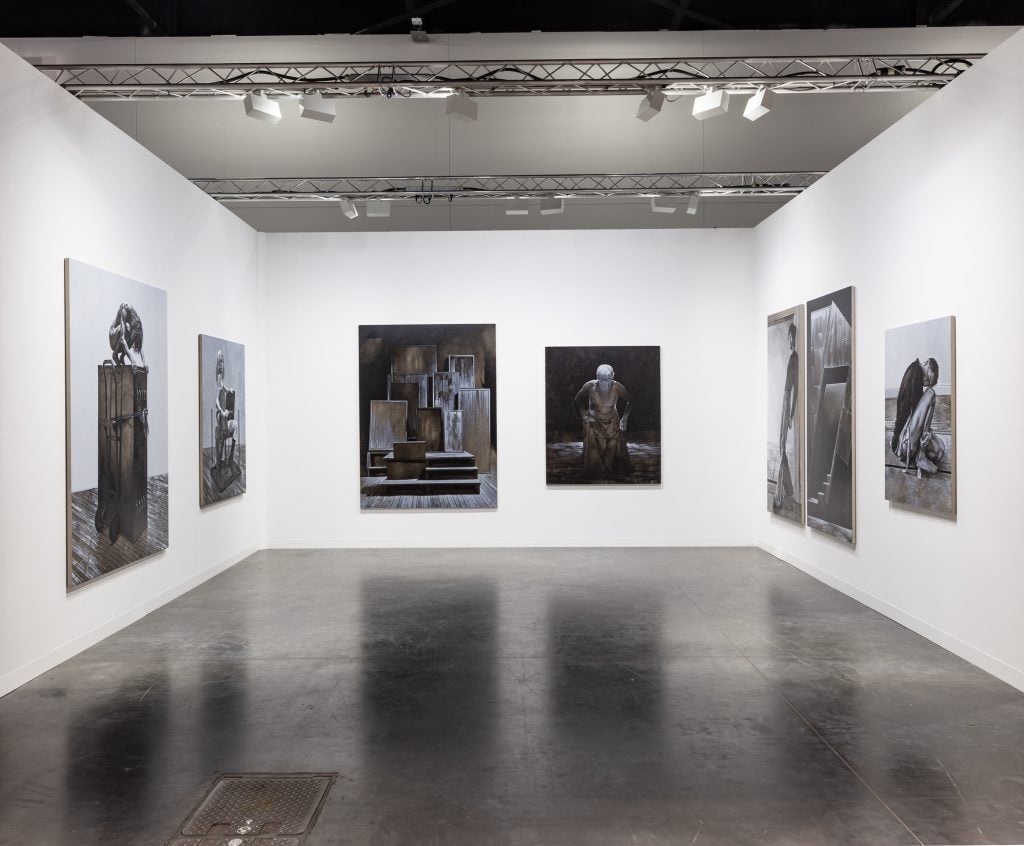Up Next
Art World Wunderkind Alexander Shulan on Breaking the Gallery Mold
The New York dealer Alexander Shulan discusses his love of H.R. Giger, nearly going bankrupt, and starting over on the Bowery.

The New York dealer Alexander Shulan discusses his love of H.R. Giger, nearly going bankrupt, and starting over on the Bowery.

Annie Armstrong

One clear guidepost for how much time has elapsed since the outset of the Covid-19 pandemic is the career trajectory of Alexander Shulan. His reputation as the wunderkind art dealer behind the tastemaking gallery Lomex has hung over him for a sustained four years now. This is perhaps an indication of the collective conscience’s inability to calculate the passage of time, thanks to the damage caused by lockdown protocols.
In March of 2020, during the final days before any of us knew what an online viewing room was, Shulan sat at the Independent Art Fair during New York’s Armory Week and checked his bank account. Things didn’t look good.
“I was bankrupt, and I was completely screwed,” he said through a laugh. He had been running Lomex out of a fifth-floor walkup on the Bowery for about four years, showing artwork mostly by his friends and throwing parties that still get talked about today. Despite his status as a key figure in the downtown art scene, though, the numbers simply weren’t adding up. When he realized he wouldn’t be hitting even that month, he broke his lease and shifted his focus to pursuing a PhD in literature, as the global economy ground to a halt.
Eventually though, because of the “funny money from the Trump administration” (meaning stimulus checks and PPP loans), he was one of a handful of scrappy beneficiaries of the sinking retail rent in lower Manhattan, and eventually re-opened at 86 Walker Street in Tribeca. “I probably wouldn’t have a gallery, honestly, if Covid hadn’t happened,” he confessed. “It was a crazy leap of faith.”

Kye Christensen-Knowles, Double Self Portrait (2022). Oil on canvas. Courtesy of the artist and Lomex, New York.
One person who had a vested interest in Shulan’s return was advisor Eleanor Cayre, the first person to walk into his space on the Bowery and who soon after bought a piece by Kye Christensen-Knowles for $9,500. The two immediately bonded over their tastes, and Cayre has been one of Lomex’s most loyal supporters over the years. “I’ve been following his program very closely since he started. He really knows how to look around and see what’s important. He’s a good cultural editor,” she said.
The new space was a traditional white cube set-up, unlike the historic apartment where Lomex started. Shulan used the opportunity to elevate his programming into something that felt less grassroots and more sophisticated. “The scope changed insofar as I’ve tried to incorporate artists and lines of aesthetic inquiry that are larger than just a hyper-local conversation,” he explained.
To do so, he honed in on what he learned from a suite of internships for some of the city’s most esteemed dealers. He looks fondly at his time as a nameless intern, taking close notes on Jeffrey Deitch’s innovative model from the basement of his space on Wooster Street. “There was this idea that you could create these incredibly frivolous, insane exhibitions, that were ludicrous and there would be a financial apparatus to support that,” he said.
Shulan clocked that Deitch would put his daring programming of younger artists downstairs, and keep the upscale secondary artworks upstairs, which positioned clients to have to walk through, say, a Rammellzee show to get access to his trove of Basquiats. “That was super exciting to me because he could use those two things in tandem to make [his programming] viable financially,” he explained.
Since Lomex moved to Tribeca, Shulan has employed a version of that model to create new markets for artists that had never been respected in the art world. One of his first shows on Walker Street was the blockbuster exhibition of artwork by H.R. Giger, the Swiss artist whose cybergoth, biomechanical aesthetic saw him collaborate with bands like Nine Inch Nails, Slayer, and a solo Debbie Harry. He is arguably more famous, however, for his defining work with the Alien franchise.

Install of H.R. Giger’s solo show at LOMEX in 2021. Courtesy of the artist and Lomex, New York.
“But he did much more than that!” Shulan reminded me. “That film was basically created from paintings that he’d made that were not designed for cinema. It was almost like an adoption of the aesthetic of this outsider artist into Hollywood.”
Shulan, who had been a fan of Giger’s work since he was just a kid who loved metal music, recognized that the artist hadn’t been recognized at all in the fine art world, and took it as an opportunity.
“Part of what I’ve been trying to do as a gallerist now is bring in aspects of visual culture that are larger than the art world, and bring in artists that haven’t traditionally had avenues in the formal art world,” he explained. It paid off, as the show fielded over a thousand visitors per week, overrun by Hell’s Angels and metalheads alongside curious collectors. “It made me feel really good about my job as an art dealer, because it didn’t have the same kind of myopia that you experience in the Tribeca art world.” he said. The show cost six figures to erect, but created a thriving new market completely under Shulan’s purview.
Since then, Shulan’s star has only continued to soar. This past December, he showed for the first time under the main tent at Art Basel Miami Beach. The night before the fair opened, I ran into Shulan at a party at the Edition, dressed in his standard uniform of an all-black tailored suit. He looked nervous. “I’m terrified,” he remarked as other dealers sloshed around margaritas. Shulan went to Miami as his only staffer, manning his booth in the convention center stag.

LOMEX’s booth at Art Basel Miami Beach 2023 featuring works by Kye Christensen-Knowles. Courtesy of the artist and Lomex, New York.
“I don’t know anyone who goes to those fairs with zero staff!” chimed in Cayre, who was once again there to support the program. “He’s one of the only people I’ve ever seen do that. I really respected that. He’s a hard worker.”
That hard work has gained him a reputation as one of the art world’s most promising dealers, a tastemaker who isn’t afraid to push the boundaries of what kind of art should be shown in a commercial gallery—and which the market undoubtedly follows. Asked if he ever feels pressure from maintaining the reputation as “one-to-watch” for over half a decade: “Absolutely,” he confessed. “I opened my gallery in 2016, so it’s been a long time since people started saying that. It’s a lot of pressure.”